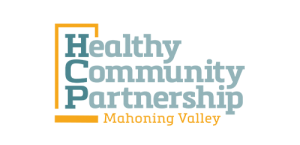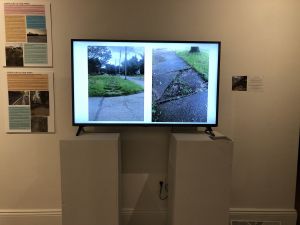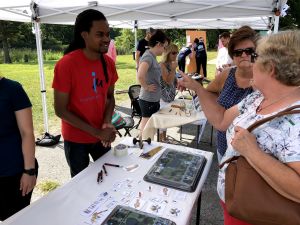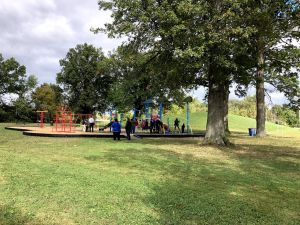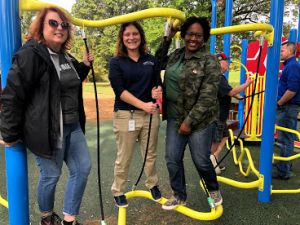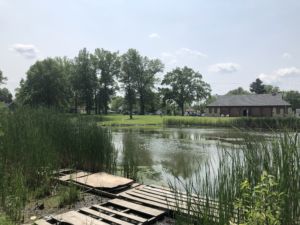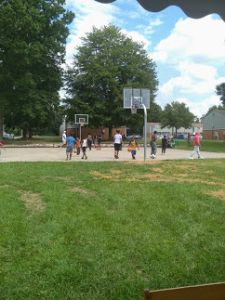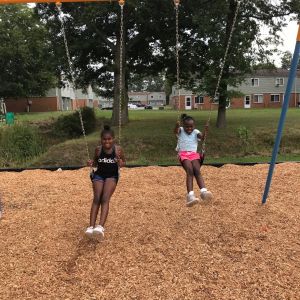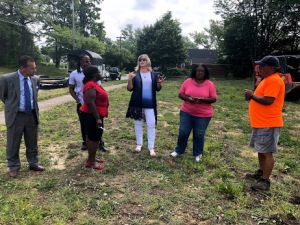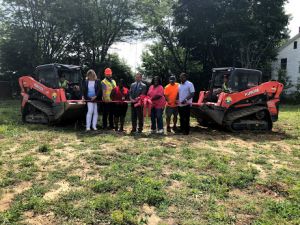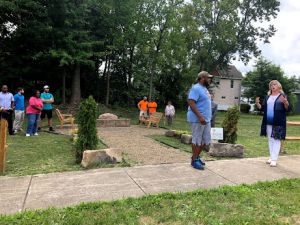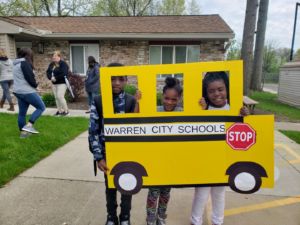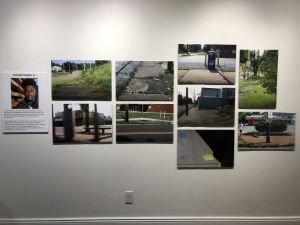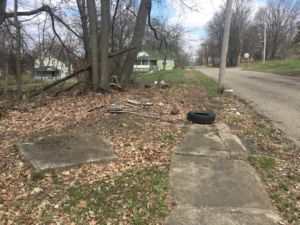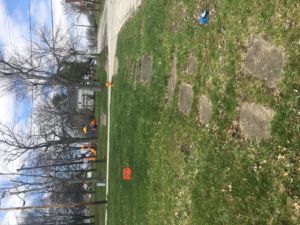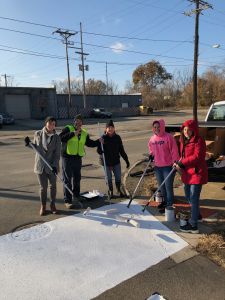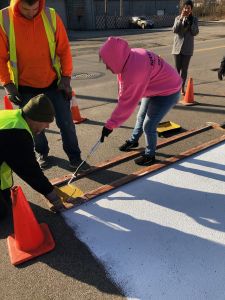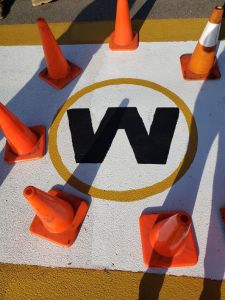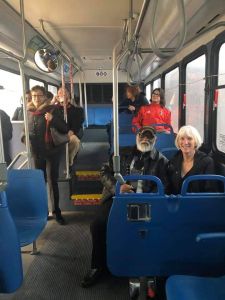Caring about Nature, Neighborhoods, and Our Neighbors
HCP-MV efforts highlight interconnectedness of parks, public spaces, people, and policy
The world is in a time of transition and transformation. Winter has become spring, for the most part. Our lives and routines are continuing to adapt to existing in a world with physical distancing. A world where holidays are celebrated on screens. A world where some of us now work, go to school, pray and play in our living rooms and kitchens. A world where the outdoors has become the gym. A world where we have been forced to live, think, and interact differently because of COVID-19.
As time ticks forward from April showers to May flowers, we should take some time to reflect on these changes and how we can celebrate and support nature, our neighborhoods, and most importantly, our neighbors.
Standing in line proudly beside hospitals, health centers, pop-up clinics, and testing sites—the places that will save lives and offer healing during the time of COVID-19—are our parks and other public spaces (ex: green spaces, sidewalks, streets, etc.).
The City Parks Alliance issued a press release stating facts that many of us know to be true, but truths that need to be shouted from the tops of the trees, louder than the screech of the proudest blue jay: Parks provide opportunities for healing. Parks provide equal access to public spaces. Parks are essential infrastructure.
Though mostly supported by observations, Kea Wilson, writing for StreetsBlog, discusses the widely accepted fact that more people seem to be walking on streets and sidewalks in our communities to stay active during Stay at Home orders. Similar to City Parks Alliance’s call to action, Wilson encourages us to “be smart, [and] seize this moment to make even more space for our growing legions of walkers while the cars are largely stalled.”
Led by the Parks and Green Spaces and Active Transportation Action Teams, the Healthy Community Partnership has been singing the praises of parks and public spaces and chirping in the ears of our local decision makers about the need to prioritize investments in our parks and public spaces, especially in neighborhoods where residents have been experiencing multiple barriers to living healthy, full lives. These truths about parks and public spaces are also why the HCP-MV Parks and Green Spaces Action Team created the Share Your Smile, Not Your Space Community Challenge. This initiative encourages residents to go outdoors, be active, be safe, and share joy and healing with themselves and others. The Active Transportation team is working on similar community outreach efforts to keep up the momentum and message that outdoor activities help us stay safe and healthy in mind and body.
Partners have been working together to develop demonstration projects that have transformed un-or-under used green spaces into vibrant public, neighborhood assets. They have also hosted numerous interactive trainings, curated a regional art exhibition, and organized activities to promote the importance of creating or maintaining inclusive public spaces for all walkers, joggers, and rollers of every age, ability, income, and race.
A few examples can be seen in the photo gallery below. These initial efforts hopefully will reveal the many benefits that studies have shown that people-centered investment in parks and public spaces will improve neighborhoods by creating safe places for people to be active, reduce crime, and increase property values.
Demonstration projects are only step one in a longer marathon towards the bigger goal, which is policy change. An often cited example that shows physical changes or demonstrations can lead to more universally adopted policy standards is the “Curb-Cut Effect.” The Curb-Cut Effect, “is a vibrant illustration of how laws and programs designed to benefit vulnerable groups, such as the disabled or people of color, often end up benefiting all…First documented as the response to the advocacy of people in wheelchairs, these sidewalk indentations turned out to benefit many: those pulling suitcases on wheels, pushing babies and young children in strollers, bikers, workers with large racks making deliveries, and many others.
Because parks and public spaces are open spaces, they should be welcoming and accessible to everyone. And, they are also important resources to address issues of health equity or inequity as is unfortunately often the case. Though parks and public spaces can be incredible assets, they can also become liabilities if they are not properly maintained or supported, which too often is the case in neighborhoods where the majority of residents are people of color or low-income. According to an article celebrating Infrastructure Week in 2019, Policy Link, a national organization leading conversations, research, and advocacy to build more equitable communities, outlined the case for why communities need to embrace parks as a strategy to improve health/health equity:
Successful parks are markers of healthy communities: children play; families spend time together; people of all ages exercise and relax; and the environment adds to the beauty, security, and economic value of the neighborhood. On the other hand, neglected, dangerous, poorly maintained, or badly designed parks and recreation facilities have the opposite effect: families and young children stay away, illicit activities proliferate, and the property becomes a threatening or discouraging eyesore. To remain community assets, parks and recreation facilities need adequate budgets, good management, and a strong connection with residents.
America Walks, similarly, has called attention to a truth that too many know too well: “It has become clear that too many people lack adequate pedestrian infrastructure to stay apart, safe, and healthy during the COVID-19 pandemic. The unfair differences in safe and accessible walking and moving have also sunk in. There are differences in access to active mobility and leisure by race, neighborhood, ability, and income.”
Communities of color have been disproportionately impacted by COVID-19 in terms of individuals who have contracted and in some cases tragically died from the virus but also in terms of who has experienced other significant life-altering consequences like job loss, missed rent or utility payments, additional barriers to food access, transportation, child care, and so on. These troubling facts should not come as surprises, however, because, as stated by researchers at the Brookings Institution in a recent analysis of racial inequity during COVID-19, “By choosing to neglect Black communities during good times, we are forced to confront these existential problems during worse times.”
COVID-19 is shining a bright light on many cracks, gaps, or gaping chasms in our systems, just like in our sidewalks, and we can no longer overlook them as though they are hidden in the shadows, just out of sight.
We have seen the forest through the trees. Two examples discussed here are the critical need for communities to come together to support parks and public spaces and to address health equity with both immediate and long term program and policy solutions. Both must be addressed and seen as interconnected if we are to continue to work towards creating and sustaining healthy communities and healing as we transition into the next phase of life during the times of the COVID-19.
Part of addressing and ultimately overcoming health inequities, to make sure parks and other public spaces are safe and welcoming to everyone, is directly naming and confronting racism as a public health crisis. Many cities, counties, and boards of health are beginning to do this, some close by in Ohio. Soon, hopefully communities here in the Mahoning Valley will be added to this growing list.
Last year, Lynda Lopez, again writing for StreetsBlog, urged a call to action at the end of a forum examining mobility justice and why this justice and people-centered approach is necessary:
Exploring mobility justice [ ] is about expanding freedom for people to be able to move and live their lives joyfully and fearlessly. It means making sure immigrants feel safe driving their car or riding a bike on the road. It means prioritizing bus service in our cities. It means expanding rail service to underserved communities. It means centering the voices of those often left out of infrastructure decisions. It means creating policies so low-income residents have stable housing near transit. Mobility justice is a vision for a world rooted in social justice where people feel safe existing on the streets and can build lives experiencing the full joy of movement regardless of their physical ability. Mobility justice is a vision that can guide us to create communities that are truly inclusive and transformative.
So, as we march on, we must keep repeating this song—like the robins or the sparrows, every morning, every day, even when it might get annoying—Parks and public spaces provide opportunities for healing. Parks and public spaces provide equal access to activity and movement. Parks and public spaces are essential infrastructure. Parks and public spaces are places where change and transformation can happen, for every neighbor, in every neighborhood, if we are bold enough to keep moving forward instead of rolling back to “normal.”
HCP Action Teams Photo Gallery
- Blueberry Bushes with buds and leaves in the springtime.
- Boulevard Park Neighborhood Blueberry Patch in spring, waiting for leaves and berries to grow.
- Volunteers and neighbors help clear the land and plant dozens of blueberry bushes for the Boulevard Park Neighborhood Blueberry Patch
- Staff from Trumbull Neighborhood Partnership talk with residents for feedback on plans for park and playground improvements at Quinby Park
- Staff from Trumbull Neighborhood Partnership, Board Members of the Swanston Charitable Fund, members of HCP-MV, and Warren residents celebrate the opening of the new playground at Quinby Park.
- Some of HCP’s top park promoters getting in touch with their inner child on new playground equipment at Quinby Park
- Enjoy the view at the pond at Quinby Park in Warren
- Young residents in the Lincoln Knolls neighborhood celebrate improvements on the basketball court at Lincoln Knolls Community Park.
- Young residents enjoying new playground equipment at Lincoln Knolls Community Park
- Young residents in the Lincoln Knolls neighborhood celebrate the new swing-set now at Lincoln Knolls Community Park
- Leaders from the City of Youngstown, the Mahoning County Land Bank, and Youngstown Neighborhood Development Corporation celebrate the first phase to transform an empty lot into a neighborhood bright spot on the southside of Youngstown.
- Leaders from the City of Youngstown, the Mahoning County Land Bank, and Youngstown Neighborhood Development Corporation celebrate the first phase to transform an empty lot into a neighborhood bright spot on the southside of Youngstown.
- Leaders from the City of Youngstown, the Mahoning County Land Bank, and the Colony Youngstown celebrate the completion of Peace Park
- Boardman Walk and Bike to School Day Boardman May 2019
- Boardman Walk to School Day Boardman October 2019
- Walk and Bike to School Day Youngstown May 2019
- Walk and Bike to School Day Youngstown May 2019
- Warren Walk and Bike to School Day May 2019
- Bill sharing bike safety tips at Walk and Bike to School Day Warren May 2019
- Walk Youngstown Sign Installation August 2019
- Walk Youngstown Sign Installation August 2019
- Walk Youngstown Sign Installation August 2019
- Warren Trumbull County Bike Fest, community riders getting ready to roll out.
- Advocating for Active Transportation Workshop Summer 2019
- Complete Streets Policy Workshop Summer 2019
- City Club of the Mahoning Valley: Pedestrian Safety Forum Summer 2019
- City Club of the Mahoning Valley Transportation in Trumbull County Forum Fall 2019
- Where Sidewalks End photos by Mikenna McClurg November 2019
- Where Sidewalks End photographs by Joe Napier
- Where Sidewalks End Public Submission
- Where Sidewalks End Public Submission
- Warren Creative Cross Walks Pilot Painting Fall 2019
- Warren Creative Cross Walks Pilot Painting Fall 2019
- Warren Creative Cross Walks Pilot Painting Fall 2019
- WRTA Warren Route Kick Off March 2020
- WRTA Warren Route Kick Off March 2020
